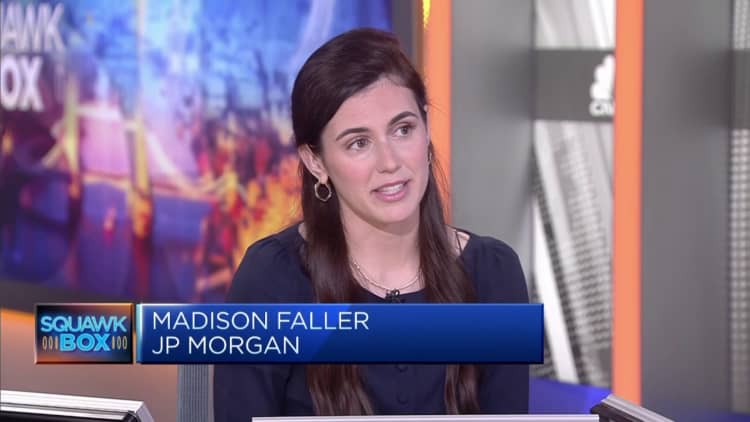What that means for your money

The Federal Reserve announced Wednesday it will leave interest rates unchanged as inflation continues to prove stickier than expected.
However, the move also dashes hopes that the Fed will be able to start cutting rates soon and relieve consumers from sky-high borrowing costs.
The market is now pricing in one rate cut later in the year, according to the CME’s FedWatch measure of futures market pricing. It started 2024 expecting at least six reductions, which was “completely fantasy land,” said Greg McBride, chief financial analyst at Bankrate.com.
That change in rate cut expectations leaves many households in a bind, he said. “Certainly from a budgetary standpoint, not only is inflation still high but that is on top of the cumulative increase in prices over the last three years.”
“Prioritizing debt repayment, especially of high-cost credit card debt, remains paramount as interest rates promise to remain high for some time,” McBride said.
More from Personal Finance:
Cash savers still have an opportunity to beat inflation
Here’s what’s wrong with TikTok’s viral savings challenges
The strong U.S. job market is in a ‘sweet spot,’ economists say
Inflation has been a persistent problem since the Covid-19 pandemic, when price increases soared to their highest levels since the early 1980s. The Fed responded with a series of interest rate hikes that took its benchmark rate to its highest level in more than 22 years.
The federal funds rate, which is set by the U.S. central bank, is the interest rate at which banks borrow and lend to one another overnight. Although that’s not the rate consumers pay, the Fed’s moves still affect the borrowing and savings rates they see every day.
The spike in interest rates caused most consumer borrowing costs to skyrocket, putting many households under pressure.
Increasing inflation has also been bad news for wage growth, as real average hourly earnings rose just 0.6% over the past year, according to the Labor Department’s Bureau of Labor Statistics.
Even with possible rate cuts on the horizon, consumers won’t see their borrowing costs come down significantly, according to Columbia Business School economics professor Brett House.
“Once the Fed does cut rates, that could cascade through reductions in other rates but there is nothing that necessarily guarantees that,” he said.
From credit cards and mortgage rates to auto loans and savings accounts, here’s a look at where those rates could go in the second half of 2024.
Credit cards
Since most credit cards have a variable rate, there’s a direct connection to the Fed’s benchmark. In the wake of the rate hike cycle, the average credit card rate rose from 16.34% in March 2022 to nearly 21% today — an all-time high.
Annual percentage rates will start to come down when the Fed cuts rates, but even then they will only ease off extremely high levels. With only a few potential quarter-point cuts on deck, APRs aren’t likely to fall much, according to Matt Schulz, chief credit analyst…
Read More: What that means for your money
